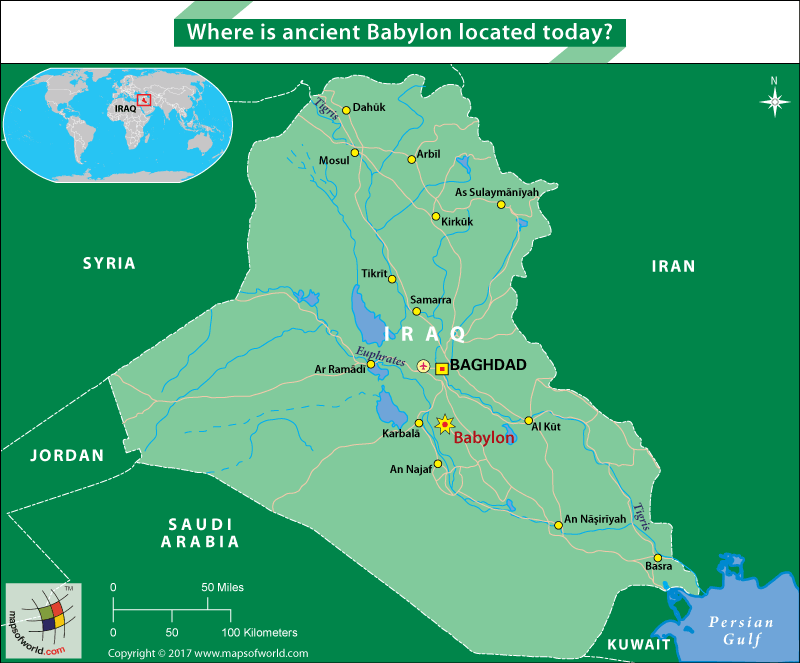Where is Ancient Babylon Located Today?
Where is Babylon?
Babylon is one of the most famous cities of the ancient world. It was the center of a flourishing culture and an important trade hub of the Mesopotamian civilization. The ruins of Babylon can be found in modern-day Iraq, about 52 miles (approximately 85 kilometers) to the southwest of the Iraqi capital, Baghdad. All that remains of the great city that was at the heart of one of the most ancient civilizations on Earth, is a tell (archeological site) of debris and mounds spread across an area of less than one square mile near the town of Hillah in the Babil Governorate of Iraq. Ancient texts say that Babylon was located between the Tigris and Euphrates Rivers. Archeologists now believe that the course of the Euphrates River has changed since ancient times, and many parts of the ancient city are now submerged.
The name Babylon is believed to have been derived from the Akkadian reference to the city – Bav-il or Bav-ilim which means “Gate of the Gods.” The word “Babylon” was first used by the ancient Greeks.
Historic records suggest that Babylon emerged as a city in the Akkadian civilization around 2500 BCE. Having been deemed an independent city-state in the Amorite Empire, Babylon became the capital under Hammurabi and later, the capital of subsequent dynasties that reigned over Mesopotamia. With the rise of Babylonia (southern Mesopotamia), Babylon became the most important political and spiritual center of Mesopotamia. Through the centuries Babylon became one of the most coveted cities, falling repeatedly to conquerors, but rebuilt each time by the reigning monarch. Following the Amorite and the Hittite rule, Babylon was controlled by the Kassites, Chaldeans, Arameans, and Assyrians until the 7th century BCE. The city later fell to the invading Persians who ruled for about a century, and then Babylon went on to be controlled by the Macedonians, Seleucids, and Sasanians.
The culture of Babylon, its impressive architecture, flourishing arts, and education have sparked many myths and legends. It is believed that in the ancient city existed the legendary “Hanging Gardens of Babylon,” which were terraced gardens of celestial beauty that were maintained by an automated watering mechanism. This garden was cited as one of the Seven Wonders of the Ancient World by the historian Herodotus.
Babylon’s greatest claim to fame is the numerous mentions it finds in the Bible. The most notable among these is the one in the Book of Genesis, in which humans attempt to build the Tower of Babel after the Great Flood. The tower was an attempt to reach the heavens, but God became angry with the builders, causing them to speak in a different language and creating confusion that did not allow them to complete the tower. The Hebrews believe that the city may have been named after the Hebrew word Bavel meaning confusion. Babylon also features prominently in the books of Daniel, Isaiah, Jeremiah, and the Book of Revelation.
Related Links:
Related Maps:




